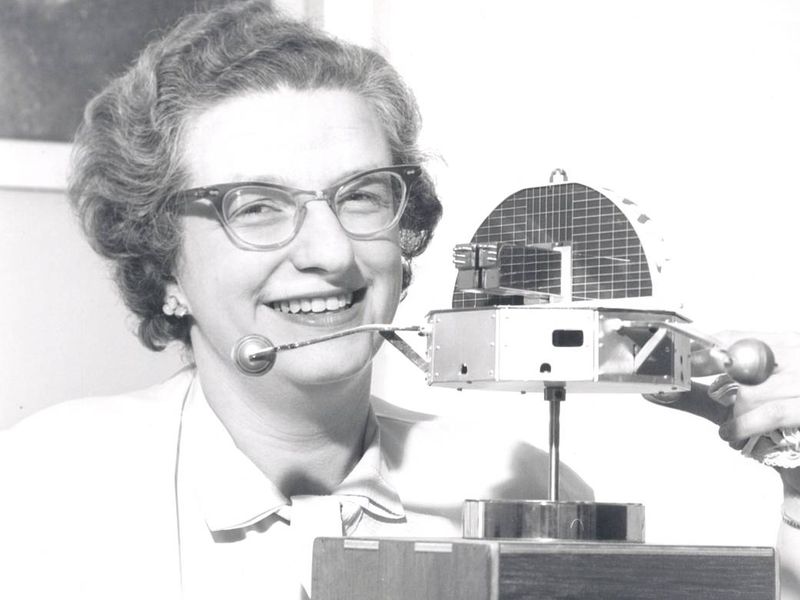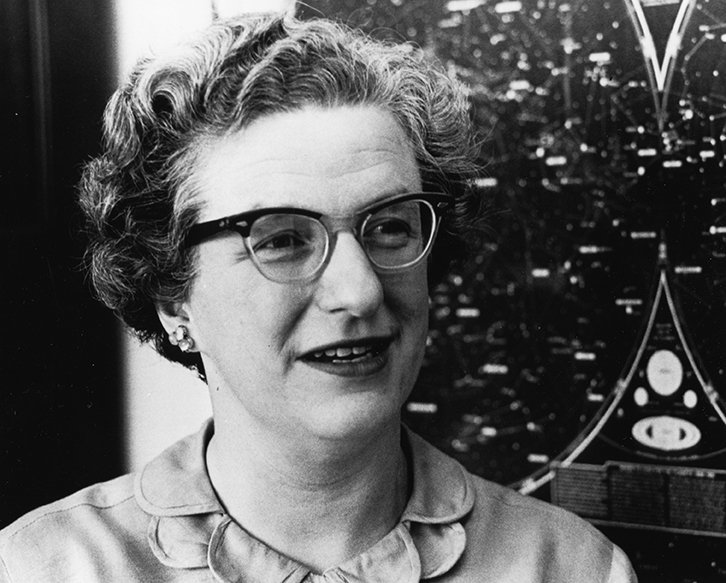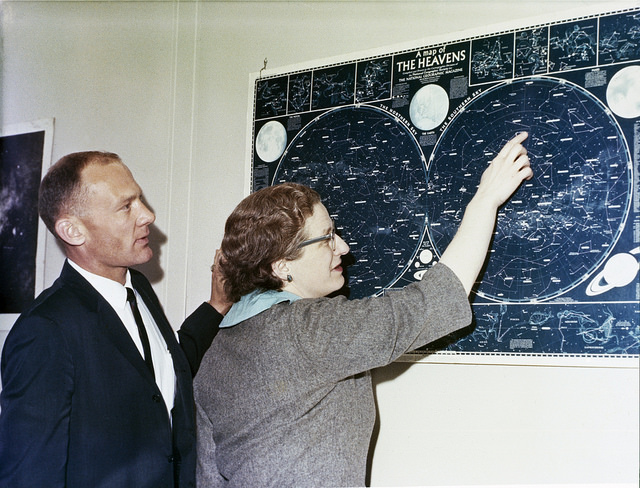Mother of Hubble Telescope

Who would have thought that this little newborn baby girl born in Nashville, Tennessee would defy all odds and rise to the challenge what nobody ever thought was possible in that era? The girl like most women in the sciences in the mid-twentieth century would have to face the male dominance to pursue a role in science and technology where these roles were perceived as inappropriate for women in that time period but unlike many women discouraged by the odds, she continued to be resilient and thus Roman’s scientific legacy was hard-won. She emphasized on science subjects despite discouragement from teachers and professors. And during her career, she faced gender-based discrimination when science was largely dominated by men, but her persistence paid off, and she became the first woman to hold an executive position at NASA before retiring in 1979. The Roman’s crowning achievement at NASA was perhaps the greatest gift ever given to astrophysics: the Hubble Space Telescope, the groundbreaking satellite observatory that has helped in more than 1.2 million observations and 14,000 research papers since its 1990 launch.
Nancy Grace Roman was born in Nashville, Tennessee on May 16, 1925, the only child of Georgia Smith Roman, a former music teacher, and Irwin Roman, a geophysicist. Because of her father’s job, the family moved various states around the US like Oklahoma, Texas, New Jersey, Michigan, and Nevada. Once Roman memorized her childhood days when her mother had taken her outside in Michigan and introduced her with the natural world and pointed out specific birds, plants, and animals. Georgia Roman often showed her the constellations and the northern lights in the night sky. At the same time tried his best to provide the answers to her queries about the natural world in a precise scientific manner that helped to grow her early interest in nature and celestial objects.
“Who would have thought that this little newborn baby
Girl born in Nashville, Tennessee would defy all odds
And rise to the challenge what nobody ever thought
Was possible in that era?”
It was because of her parents’ efforts that Roman organized her own
Despite the doubts that surrounded her scientific ambitions, Roman fought to receive secondary education in astronomy and physics. As a promising student at Swarthmore College, Roman still had paid no attention to the warnings from the Dean of Women education about studying science and ultimately earned her B.A. in Astronomy in 1946.
“The idea of the Hubble Telescope can be traced back to
1946, initially, it was astronomer Lyman Spitzer who
Published his research paper titled as “observatory”. But
Due to concerns over the costs of such a telescope and
Doubts that it could even be executed, the plan to get such
An instrument into space did not take off for a decade.”
After graduating with a BA in astronomy in 1946, she graduated from the University of Chicago, even though the professors clearly did not like educating women. Moving to the University of Chicago, she earned a Ph.D. in astronomy three years later and joined University’s Yerkes Observatory as a researcher. However, spending six years of professional success at Yerkes, she was not satisfied with her career achievements and future. Neither she was a permanent staff member and nor hopeful to be in future since she could see that those positions were overwhelmingly offering to men.
Eventually, in 1955 she met with an astronomer who needed for the US government’s naval research laboratory in Washington, DC. She applied for and got the job. Four years later, she was tipped off that the recently formed NASA was looking for someone to set up its space astronomy program. She earned that position, and finally, at NASA, she got a place where men treated her as an equal without gender discrimination.
Hubble Telescope Program:
In fact, the idea of the Hubble Telescope can be traced back to 1946, initially, it was astronomer Lyman Spitzer who published his research paper titled as “observatory”. But due to concerns over the costs of such a telescope and doubts that it could even be executed, the plan to get such an instrument into space did not take off for a decade.
In 1959 Nancy Joined NASA, just six months after the agency opened, Roman was in-charge of developing a program of astronomy from space. She traveled the US talking to astronomers in their various universities and listening to their ambitions. She also went in lengthy discussions to elaborate the advantages of observing from space, where there was no atmosphere to blur the view and no daytime to halt the observatory’s work for half the day. In 1960, she successfully arranged meetings of around 30 astronomers and NASA engineers to discuss the idea of a large, general-purpose space telescope that in order to come up with something that could sense to everyone, she acted as the interpreter for these groups of engineers and astronomers. The real hurdle lies in a heavy budget since it cost 20 times the price of the largest ground-based telescope.
Eventually, with her great efforts, she laid the foundation, but it took until the 1970s for certain key technologies to be developed, like the CCD chips that made the first digital cameras possible. Once these were available, Roman set up the program that built the Hubble space telescope. It was too laborious and by the time the telescope was launched in 1990, Roman got retirement from NASA after 11 years of hard work and dedication and joined as a consultant and an advocate for women in science.
This is because of her great contribution, she often is called the “Mother of Hubble”. Initially,
It was Edward J. Weiler, the [then] chief astronomer of NASA who worked with Roman at the agency first, called her ‘the mother of the Hubble Space Telescope’. Once he paid a great tribute to Roman that “we are regretful that history has forgotten a lot in today’s Internet age, but it was Nancy in the old days before the Internet and before Google and e-mail and all that stuff, who convinced the US Congress to fund such a huge project, organized the astronomers around the country that led to the launching of Hubble Space Telescope,
Research and Contributions:
Though many might consider Hubble to be her greatest legacy, Roman herself once told National Geographic that she was proudest of two things. During her time at Yerkes, Roman discovered that stars on circular orbits with more heavy elements are younger than those with more random orbits and fewer heavy elements. She also observed BD+67 922, a star that would later be renamed AG Draconis. Roman’s groundbreaking research on stars helped and motivate others to explore the evolution of the galaxy, and the International Ultraviolet Explorer, which facilitated over a hundred thousand observations of the stars.
Her other Work Included in the Astrophysical Journal Supplement Series was a catalog of high-velocity stars. She documented new “spectral types photoelectric magnitudes and colors and spectroscopic parallaxes for about 600 high-velocity stars”. Roman also wrote a paper on the detection of extraterrestrial planets and also discovered that stars made of hydrogen and helium move faster than stars composed of other heavier elements. Moreover, during her early research, she found that not all stars that were common had the same age. That was later proven by comparing hydrogen lines of the low dispersion spectra in the stars.

Legacy:
Roman’s role as an advocate was not limited to the Hubble, she sought to inspire young people, and particularly girls, to pursue careers in the scientific fields. After getting retired, she taught astronomy to fifth graders in Washington. She advised to students who interested to pursue a career in science that science or engineering can be a great field for you only when you enjoy puzzles because scientific research and engineering consists on a tedious series of solving puzzles. Science, like all jobs, has its share of drudgery and boredom for many but basically, it is fun.

Bilal is an avid reader and writer. He is a student of BS and very passionate for science writing.


